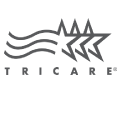To Buy Augmentin Online Visit Our Pharmacy ↓

Addressing Potential Interactions
With its powerful antibiotic synergy, Augmentin offers a painless solution for individuals suffering from sinusitis. They can also cause side effects like diarrhea. These symptoms are usually mild and resolve on their own, but in some cases, they can be severe.- Another potential side effect of Augmentin is a rash or allergic reaction. Certain medications may interact with Augmentin, either reducing its effectiveness or increasing the risk of side effects. The dosage should also be followed strictly to avoid resistance and side effects. However, some bacteria produce an enzyme, beta-lactamase, that can make them resistant to amoxicillin. Natural remedies can offer a gentler approach to managing antibiotic allergies, providing relief without the potential side effects of conventional medications.
Uncovering the Benefits of Synergy in Augmentin's Combination
Doctors can provide personalized guidance based on your child's specific condition and medical history. However, it is important to note that there are other antibiotics available that also exhibit significant efficacy in combating bacterial infections. Medical professionals perform a careful assessment to prescribe the appropriate dosage, as overuse or incorrect dosing can lead to decreased effectiveness and increased risk of resistance. It is essential to weigh the benefits and potential side effects of Augmentin and other antibiotics in order to make an informed decision regarding the most suitable treatment option. 5) Overcoming Challenges and Addressing Concerns with Augmentin:. If you have a history of liver disease or kidney problems, speak with your doctor before taking Augmentin. When using Augmentin, it is crucial to be mindful of certain considerations and precautions to ensure safe and effective treatment.
Conclusion: Harnessing the Power of Augmentin to Combat Bacterial Infections
These distributors leverage advanced logistics and supply chain technologies to manage the inventory and delivery of Augmentin, ensuring that it is available when and where it is needed. In addition to substance interactions, specific medications merit attention for those undergoing treatment with Augmentin. By targeting beta-lactamase enzymes that break down antibiotics, Augmentin could effectively treat a range of infections caused by resistant bacteria. The synergy between amoxicillin and clavulanate potassium helps to combat bacterial resistance, ensuring that the medication can successfully eliminate the infection-causing bacteria. This powerful antibiotic works wonders in alleviating the symptoms of sinusitis and providing fast relief. Common Side Effects of Augmentin: Augmentin is a combination antibiotic medication that is used for the treatment and prevention of various bacterial infections. The addition of clavulanic acid in Augmentin helps to overcome this bacterial defense mechanism, making Augmentin more effective against certain antibiotic-resistant bacteria.It is worth noting that Augmentin should only be used as prescribed by a healthcare professional.
Safety Precautions and Potential Side Effects
Amoxicillin is effective against a wide range of bacteria, while clavulanic acid helps to prevent the bacteria from developing resistance to the antibiotic. Patients who experience any of these symptoms or other unusual side effects should contact their healthcare provider immediately. One major challenge is the development of antibiotic resistance to Augmentin itself. While it is generally well-tolerated, some common side effects may include nausea, diarrhea, and stomach upset. It is important to complete the entire course of treatment, even if symptoms improve before the medication is finished. Regions like Southeast Asia and parts of Africa report significant increases in resistance, severely limiting treatment options and leading to alarming public health outcomes. Always inform your healthcare provider of any known allergies before starting any new medication, including Augmentin.
Interactions with Other Medications and Food to Be Aware of
It can also be used to treat infections of the teeth and gums. This synergistic duo works by not only inhibiting the growth of bacteria but also overcoming resistance that many bacterial strains have developed against penicillin antibiotics. The principal function of Augmentin is to target and neutralize bacterial infections by inhibiting the synthesis of bacterial cell walls. Understanding these signs is crucial for prompt identification and treatment intervention. Synergy of Its Components: The synergy of the two components of Augmentin is essential for its effectiveness against a wide range of bacterial infections. Exploring alternative options to manage Augmentin allergies can provide relief and effective treatment for individuals who may experience adverse reactions to the antibiotic. If you notice any of these side effects or any other unusual symptoms, stop the medication and contact your child’s healthcare provider immediately.
Proper Usage and Dosage
Allergic reactions to Augmentin may also occur, which can manifest as rash, itching, or difficulty breathing. This synergistic combination makes Augmentin a powerful option for treating various infections, including respiratory, urinary tract, and skin infections. Due to this duality, Augmentin is often prescribed for infections that are proven or strongly suspected to be caused by bacteria susceptible to amoxicillin, but only when less intensive antibiotic treatments are not expected to be effective. Augmentin, like any antibiotic, can cause side effects, though they are typically mild and manageable. These symptoms are usually mild and resolve on their own, but it is important to stay hydrated and replenish electrolytes if experiencing diarrhea or vomiting. Augmentin, a widely prescribed antibiotic, possesses a unique dual-action mechanism that sets it apart from other medications. Augmentin is available in various forms, including tablets, chewable tablets, and oral suspension.
Proper Dosage and Administration Guidelines for Augmentin
Moreover, Augmentin may affect liver function, leading to abnormal liver enzyme levels. When it comes to sinus infections, finding quick relief is essential. If the side effects persist or worsen, it is important to consult your healthcare provider for further guidance and possible adjustments to your treatment plan. Yet, like any medication, understanding its appropriate uses is key to harnessing its full potential without inviting undue side effects. Antibiotic resistance is a growing concern in healthcare, whereby bacteria evolve and develop resistance to the drugs used to treat infections. The production process is highly regulated, requiring rigorous testing for potency, purity, and stability before the product can be released for distribution. The unique combination of amoxicillin and clavulanate potassium in Augmentin helps to enhance its effectiveness against a wide range of bacteria.
Future Outlook on Augmentin Resistance and Research
This will help to prevent the development of antibiotic-resistant strains of bacteria. Augmentin is prescribed for treatment of respiratory infections, urinary tract infections, skin and soft tissue infections, and other infections caused by susceptible strains of bacteria. Remember, the safety and well-being of your child are the top priority when using augmentin. Amoxicillin is considered a suitable alternative for mild or moderate infections when compared to Augmentin as it has fewer side effects. Augmentin is a script commonly used to combat bacterial infections. Bacterial resistance to Augmentin typically develops through the acquisition of genetic mutations or the uptake of resistance genes via horizontal gene transfer. A follow-up appointment can help ensure the infection is fully resolved and discuss any next steps if it isn't.
Importance of Completing the Course
By exploring these alternative options, individuals with Augmentin allergies can still receive the necessary treatment for their medical conditions while minimizing the risk of adverse reactions. This is where clavulanic acid comes into play. Augmentin and other antibiotics are not immune to resistance and overuse. Therefore, the choice of antibiotic depends on the type of infection, its severity, and the patient's medical history. Therefore, the decision to prescribe Augmentin involves a careful assessment of its benefits in tackling bacterial infections while minimizing the risk of resistance, ensuring it is the most suitable option for the patient’s condition. These may be signs of a serious condition that requires prompt medical attention. Additionally, avoiding self-medication with over-the-counter remedies without prior doctor consultation is key.
Augmentin and Allergies: Precautions and Immediate Actions
Doctors prescribe Augmentin for a variety of issues including respiratory infections, sinusitis, and urinary tract infections. Firstly, optimizing antibiotic use through stringent Script protocols and Med Recs ensures that these powerful elixirs are prescribed judiciously. Before beginning a course of Augmentin with your child, it is important to talk with your child's doctor or pharmacist and understand the dosing instructions. It works as a **comp** medication where amoxicillin attacks the bacteria and clavulanic acid prevents antibiotic resistance, making the duo more effective. To manage these symptoms, it is recommended to take Augmentin with a meal or snack to help reduce the likelihood of stomach upset. Augmentin should be taken with food to avoid an upset stomach. Staying hydrated, especially when experiencing gastrointestinal symptoms, can help alleviate discomfort.














